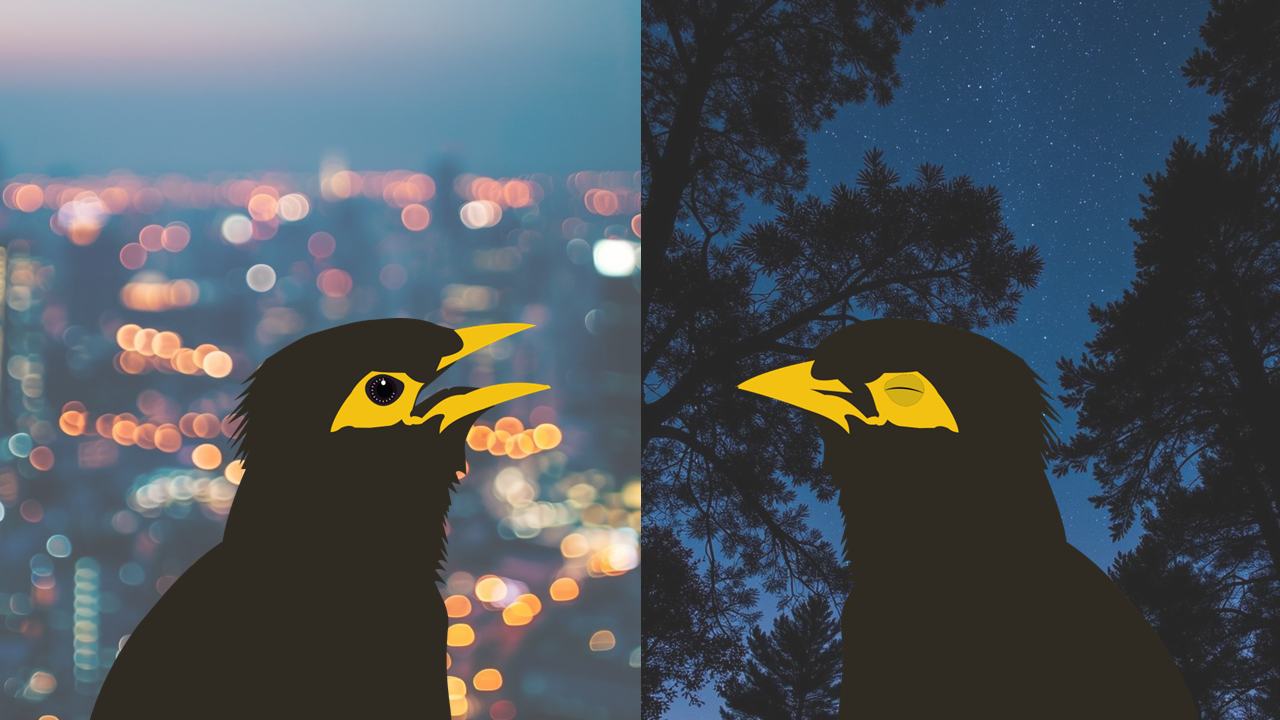Media release
From:
Birds sang fewer and simpler songs after disturbed sleep Birds that missed out on sleep changed the way they communicated in a study by scientists at Waipapa Taumata Rau, University of Auckland.
The research, led by Dr Juli Gaviraghi Mussoi, of the School of Biological Sciences, found that common mynas sang fewer and simpler songs after a single night of disturbed sleep. Their calls also changed in pitch and duration – the sounds were longer and lower – potentially affecting how they interact socially.
“We’ve all had days where we feel flat and unmotivated after a rough night,” says Mussoi. “What we’re seeing is that birds have those days too.”
Bird vocalisations serve a range of purposes, from attracting mates to warning of danger and maintaining group cohesion. Producing these sounds requires precise timing and coordination between the brain, lungs and throat muscles.
For birds of many species, a poor-quality song could be a threat to reproduction and survival.
The researchers tested birds after different types of sleep disruption: a full night, the first half of the night, or the second half. All types affected the birds’ behaviour the next day, though a full night of disruption had the strongest impact.
“We also noticed the birds rested more during the day, suggesting they were trying to recover” says Mussoi.
She cautioned this was the first study of how sleep disruption affected birdsong complexity, with more studies needed for firm conclusions.
While common mynas are highly adaptable and thrive in urban settings, the findings raise concerns about native species that may be more vulnerable to ongoing light and noise pollution.
“This research shows that even short-term sleep loss changes how birds communicate,” Mussoi says. “In cities, these disruptions aren’t rare. They’re constant.”
Mussoi conducted the research for her PhD and has since become a lecturer at the University of Waikato. Associate Professor Kristal Cain and Professor Margaret Stanley were also part of the study.
The project had one other outcome: Mussoi’s sixth bird tattoo to commemorate a research project.
The picture of mynas adds to images representing studies of Australian magpies (another sleep deprivation study), pīwakawaka or fantails (song and reproductive success), budgies (visual acuity), great tits (cognition and problem solving) and Southern Lapwings (effects of human presence on behaviour).
Where did she get her great interest in birds?
“I grew up in a small city in southern Brazil, and as a child, I spent nearly every day at my grandmother’s farm,” she says. “I’d spend hours with the animals, playing with frogs and watching birds – that’s where my love for birds began.”
Later, at university, she discovered the incredible diversity of bird species and was captivated by their behaviours, especially the colours and elaborate courtship dances of Birds-of-paradise.
“That mix of early experiences and scientific curiosity is what keeps me so fascinated by birds.”
Expert Reaction
These comments have been collated by the Science Media Centre to provide a variety of expert perspectives on this issue. Feel free to use these quotes in your stories. Views expressed are the personal opinions of the experts named. They do not represent the views of the SMC or any other organisation unless specifically stated.
Dr Juli Gaviraghi Mussoi, Lecturer and study lead author, School of Science, University of Waikato, comments:
In our study, we found that after just one bad night of sleep, common mynas sang less and their songs were simpler. They also spent more time resting during the day, suggesting they were too tired to sing and chose to nap instead.
Birds use songs and calls to share information about food and predators, to attract mates, and to protect territories. Therefore, a poor song performance could affect their ability to communicate, find mates and survive.
Our findings show that even one bad night of sleep can change how birds sing. However, in urban environments, disturbances such as light and noise pollution at night are chronic issues. That means many birds are likely dealing with poor sleep every night.
While common mynas are tough city birds, many native species aren’t as adaptable. That means they could be even more affected by sleep loss caused by urban life.
Urban centres can help birds sleep better by planting more trees, reducing unnecessary lighting, using dimmer and warmer lights, and cutting down nighttime noise from things like fireworks and loud vehicles.



 New Zealand
New Zealand



